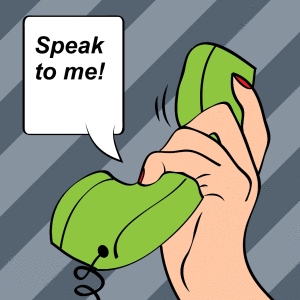It bothered me that Janet’s new testimonial was as ho hum as they come, at least to me. So I showed it to Rick.
 Rick read it through and said, “I can’t fault the way the author spells out the facts that changed due to Janet’s coaching skills but even with all that it seems like every testimonial I’ve ever seen for a management consultant. It says she walks on water but that is hard to believe.”
Rick read it through and said, “I can’t fault the way the author spells out the facts that changed due to Janet’s coaching skills but even with all that it seems like every testimonial I’ve ever seen for a management consultant. It says she walks on water but that is hard to believe.”
“Why not?” asked Chris.
“Age, experience and one of the lessons I learned when I was earning my spurs.”
“Spurs?” Chris said.
Rick replied, “It’s a figure of speech in the Direct Marketing space. What I learned when I was a little younger than Chris is that testimonials can really help close a sale but only if they are human and the testimonial can help get a prospect over what is keeping them from making a decision to do what you want them to do.”
I asked, “Can you give me an example?”
“Fletch,” he said, I’ll give you one from your own web site.”
You could have seen the lump in my throat as I said, “Okay, fire away.”
Rick said, “On the 30-Second Marketing page of the consulting section of your website there’s a testimonial from Jim Grew. It says:
“When he proposed that I answer the question, ‘What do you do?’ with:
I’m the Business Defogger & Accelerator.
I thought he was nuts.
And then I tried it.
Everybody gets it.
Nobody forgets it.
Colleagues want to know how I came up with it.
I tell them to talk to Jerry.”
Notice how it goes from ‘I thought he was nuts to nobody forgets it.’ And then on top of that adds the last bit about colleagues?
The essence of the testimonial could have been ‘Colleagues want to know how I came up with my tagline.’
But he added his concern. See the difference?”
Gail said, “So you’re advocating that a concern or problem the testifier has with the person or the process they are lauding should be part of the testimonial, right?”
“Exactly,” said Rick. “A testimonial is more than icing on the cake. It can overcome an objection as well as help convince or persuade the prospect to take a step or two further in making a purchase. It’s why every diet product you’ve ever seen uses before and after photos and when it is on video the former Mr. Obesity says something like ‘I tried all kinds of things but this simple solution is the one that finally worked for me.’
The Takeaway: Put a concern or objection on the front end of a testimonial. Overcoming it makes the testimonial more powerful.
Jerry Fletcher’s blog recaps conversations with clients, prospects and the unruly mob of business development professionals he consorts with. They discuss marketing that works from solopreneur to enterprise level. Jerry Fletcher is the ringleader and “Watson” of the dialogue.
Jerry has been researching and implementing small business marketing that builds businesses, careers and lives of joy for 25 years as President of Z-axis Marketing, Inc. Learn more at www.JerryFletcher.com
Schedule a personal appearance. Jerry speaks internationally on Networking, Marketing and Contact Relationship Magic. www.NetworkingNinja.com









